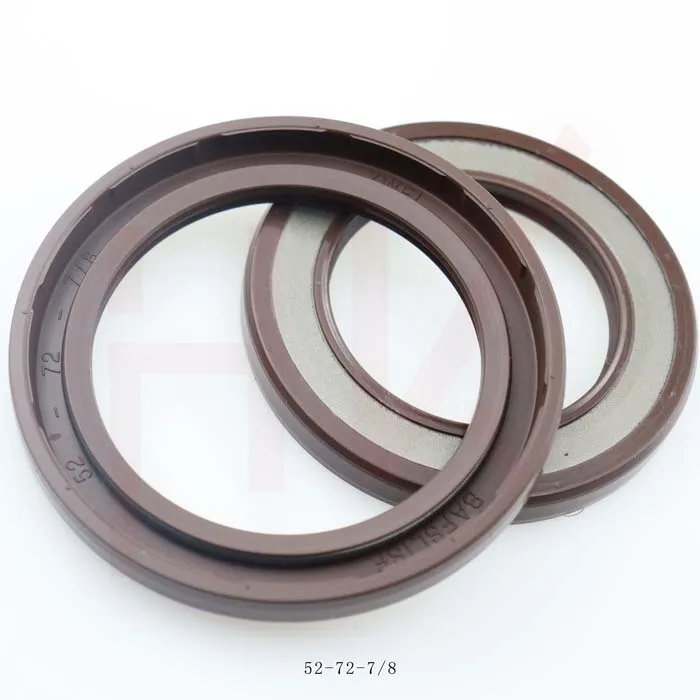Nov . 10, 2024 04:09 Back to list
Exploring the Functions and Benefits of Wiper Rings for Enhanced Sealing Efficiency
The Importance of Wiper Rings in Mechanical Systems
In the realms of engineering and machinery, many components work together to ensure seamless operation and longevity. Among these components, the wiper ring plays a crucial role, particularly in hydraulic and pneumatic systems. This article will explore the importance of wiper rings, their design and functionality, and their contributions to the overall performance of machinery.
What are Wiper Rings?
Wiper rings are sealing elements designed primarily to prevent contaminants from entering hydraulic cylinders and other types of systems that involve moving parts. They are typically made from resilient materials such as rubber, polyurethane, or thermoplastic elastomers, allowing them to provide a durable barrier against dirt, dust, and other potential pollutants that could compromise system integrity.
Functionality and Design
The primary function of wiper rings is to wipe the surface of the piston or rod as it exits a cylinder, thereby preventing the ingress of debris. This is essential because contaminants can lead to significant wear and tear on the moving parts, potentially resulting in costly repairs or replacements.
Wiper rings are designed with specific geometries and sizes to fit various applications. They may come in a variety of shapes—such as flat, lip-type, or U-shaped—depending on the requirements of the system. The choice of design significantly affects their effectiveness in different environments. For instance, a lip-type wiper ring has an angled lip that hugs the rod, providing a better seal and more effective wiping action compared to a flat wiper.
Applications in Various Industries
Wiper rings are utilized across a multitude of industries, including automotive, aerospace, construction, and manufacturing. In automotive applications, they are used in power steering systems and shock absorbers, where preventing fluid leakage and contamination is crucial for optimal performance.
wiper ring

In the aerospace sector, wiper rings are essential in hydraulic systems that control various functions of aircraft. A failure in any component can lead to dire consequences, making the reliability of wiper rings paramount.
Construction equipment, often operating in harsh environments, also relies heavily on wiper rings. Excavators, loaders, and other heavy machinery face challenges from dust, mud, and water, which can degrade seals. The use of high-quality wiper rings helps maintain machinery efficiency and extends its operational life.
Factors Influencing Wiper Ring Performance
Several factors influence the performance of wiper rings, including material composition, temperature resistance, and compatibility with lubricants. The right material choice is critical; for instance, using a wiper ring that is too soft may result in premature wear, while one that is too hard may fail to conform adequately to the sealing surfaces.
Temperature extremes can also affect the performance of wiper rings. In applications where temperatures vary widely, it is vital to select materials with suitable thermal stability. Furthermore, wiper rings must be compatible with the lubricants used in the system to prevent chemical degradation.
Maintenance and Longevity
To ensure the longevity and effectiveness of wiper rings, regular maintenance is a must. This can include inspecting the rings for wear and tear, ensuring that the surfaces they contact are clean and free from contaminants, and replacing them when necessary. Neglecting these aspects can lead to premature failure of not only the wiper rings but also the entire hydraulic or pneumatic system.
Conclusion
Wiper rings may seem like small components in the grand scheme of engineering, yet their role is vital in ensuring the efficiency and longevity of various mechanical systems. By providing a critical barrier against contaminants, they help maintain system integrity and reduce the risk of costly repairs. Understanding the importance, functionality, and maintenance of wiper rings is essential for engineers and technicians who aim to achieve optimal performance in their machinery. As industries continue to innovate and push the limits of technology, the importance of such essential components will only grow, emphasizing the need for quality and reliability in every aspect of mechanical design.
-
TCN Oil Seal Metal Ring Reinforcement for Heavy Machinery
NewsJul.25,2025
-
Rotary Lip Seal Spring-Loaded Design for High-Speed Applications
NewsJul.25,2025
-
Hydraulic Cylinder Seals Polyurethane Material for High-Impact Jobs
NewsJul.25,2025
-
High Pressure Oil Seal Polyurethane Coating Wear Resistance
NewsJul.25,2025
-
Dust Proof Seal Double Lip Design for Construction Equipment
NewsJul.25,2025
-
Hub Seal Polyurethane Wear Resistance in Agricultural Vehicles
NewsJul.25,2025
-
The Trans-formative Journey of Wheel Hub Oil Seals
NewsJun.06,2025
Products categories
















